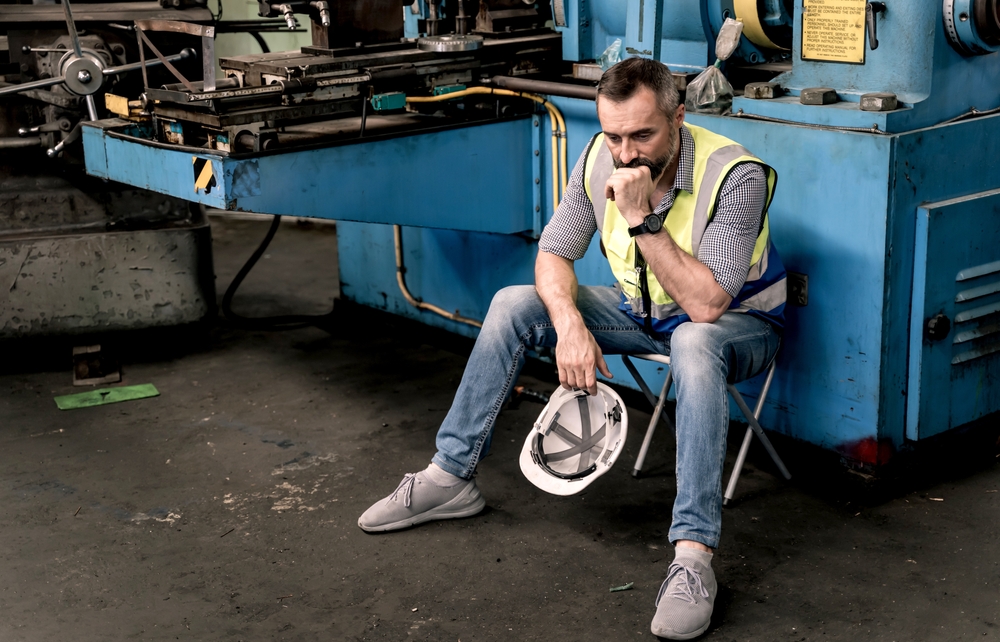Back to Basics is a weekly feature that highlights important but possibly overlooked information that any EHS professional should know. This week, we examine suicide prevention in the construction industry.
This week, September 5-9, 2022, is Construction Suicide Prevention Week. OSHA created this week back in 2020 in partnership with many sponsors in the construction industry in order to raise awareness about the high number of suicides in construction, and to provide resources to help prevention efforts.
Statistics
Suicide rates have risen by 40% in the U.S. in the last two decades, according to a CSDZ article written by Jerry Ouimet, the President of CSDZ, and blue collar workers are at a significantly higher risk. These blue-collar workers include those from the mining, oilfield, construction, and auto-repair industries.
Ouimet says researchers examined the suicide rates by profession for 20,975 people between ages 16-64. He says that for both men and women, construction and “extraction” workers, mostly in the mining or oil and gas fields, had the highest suicide rates. They also discovered that the total suicide rate among men was 27.4 per 100,000 people, and the rate in the construction field was 49.4 out of 100,000 people.
Construction risk factors
Construction workers face many different risk factors, and according to another CSDZ article, the construction industry has high incidences of these physical and behavioral health conditions:
- Fatigue
- Obesity
- High blood pressure
- Tobacco use
- Cardiovascular disease
- Musculoskeletal disorders
- Chronic pain
- Social isolation and loneliness
- Stress and anxiety
- Depression
- Propensity for risk-taking
- Heavy/binge drinking
- Substance misuse
- Suicide
There are four additional risk factors that contribute to the physical and mental well-being of construction workers, says CSDZ. The first is workforce culture, where there is a stigma surrounding mental health and the stoic “tough guy and gal” work ethic and mentality, which often does not leave space for feelings to be spoken about.
The second risk factor are company factors, which can include the nature of construction work, the location and amount of work, the schedule and sequence of work, and the amount of overtime workers put in. The third factor is job stressors, such as working long hours in physically and mentally demanding work conditions, which sometimes take place in harsh environments.
The last risk factor is worker lifestyle choices. The risk is caused by whether or not a worker is receptive to seeking medical and mental health care, and individual choices about nutrition, exercise, alcohol, and substance use. This element also depends on the worker’s adoption of stress management and self-care practices, or lack thereof.
Due to all of these risk factors, CSDZ says that construction has the second highest rate of suicide, which is over three times higher than the rate among the United States general population, and it has the highest number of suicides out of all occupations.
Prevention
The Construction Industry Alliance for Suicide Prevention (CIASP) has several resources and recommendations that they say are designed to help leaders make suicide prevention a health and safety priority, increase mental health literacy, and normalize conversations about mental health and suicide.
The CIASP’s first recommendation is to incorporate toolbox talks on psychological safety topics. The CIASP has their own toolbox talks they recommend, and OSHA and their partners for Construction Suicide Prevention Week also provide a series of recommended toolbox talks on the subject.
For further awareness and information dissemination, the CIASP recommends printing and distributing wallet cards with warning signs and help lines, using display posters that address suicide, Employee Assistance Programs (EAP), and other mental health services, and using hardhat stickers. Display posters should be put up in breakrooms or on company billboards, says the CIASP.
Additionally, the CIASP says employers should promote free, anonymous screening tools to help employees notice and identify potential mental health issues. They also say EAP providers should be asked to present sessions or lunch and learns on mental health and coping techniques.
OSHA provides a list of five things to know about suicide prevention:
- Everyone can help prevent suicide – when working closely with others, an employee may sense something is wrong, and though mental health and suicide can be a difficult subject, one person’s actions can make a difference.
- Know the warning signs – these include changes in behavior, mood, and what a person says, all of these can be indicators that someone is at risk.
- Ask “Are you okay?” – if there is concern about a coworker, talk with them privately, listen without judgement, and encourage them to reach out to an EAP, the human resources (HR) department, or a mental health professional.
- If someone is in crisis, stay with them and get help – if a coworker is at immediate risk of suicide, stay with them and contact emergency services.
- Suicide prevention resources are available – call or text the Suicide and Crisis Lifeline at 988, or visit the American Foundation for Suicide Prevention (AFSP) to learn more about risk factors, warning signs, and prevention methods.
Visit the website for Construction Suicide Prevention Week, and check out OSHA’s resources for suicide prevention for more information.

